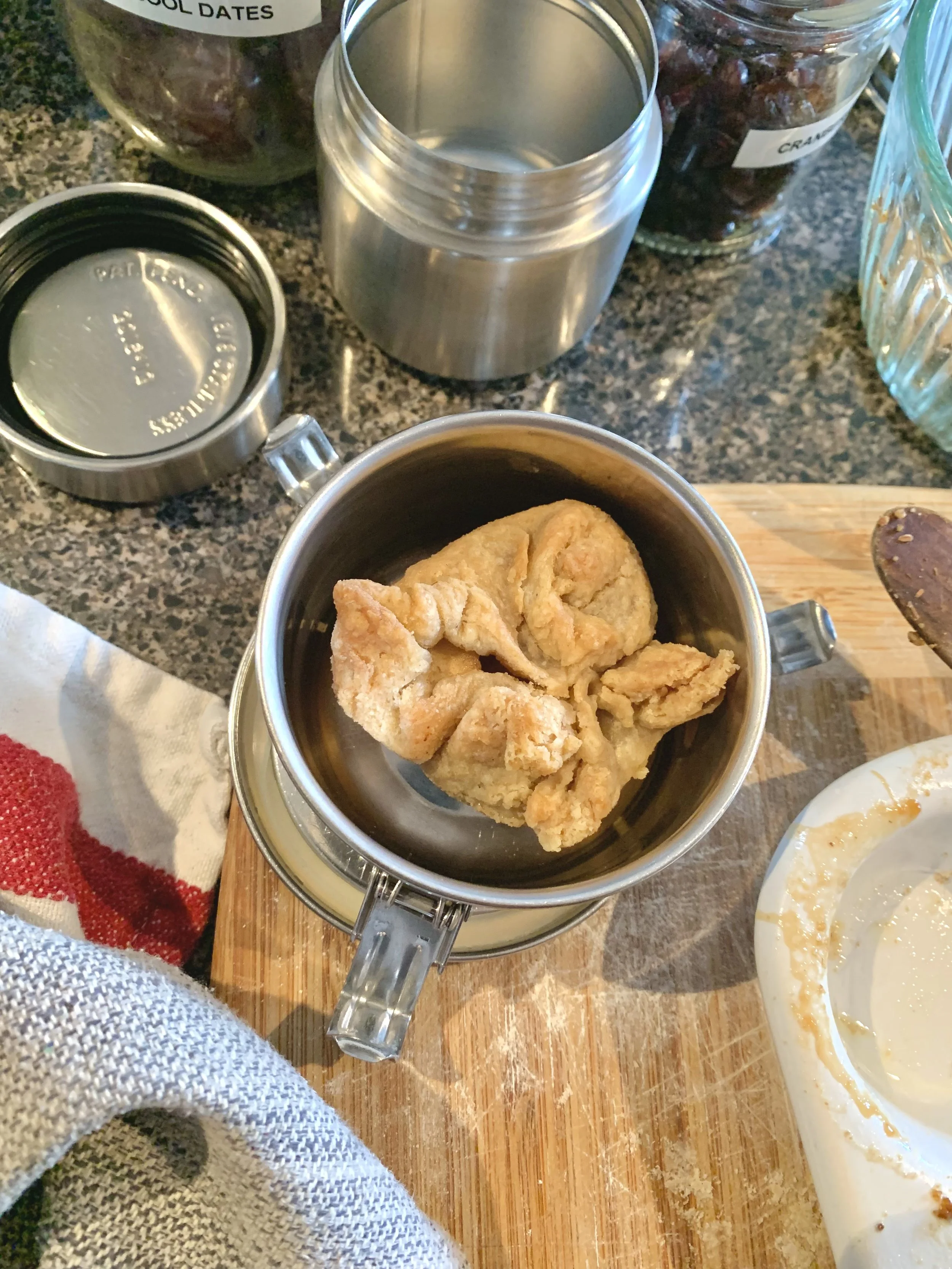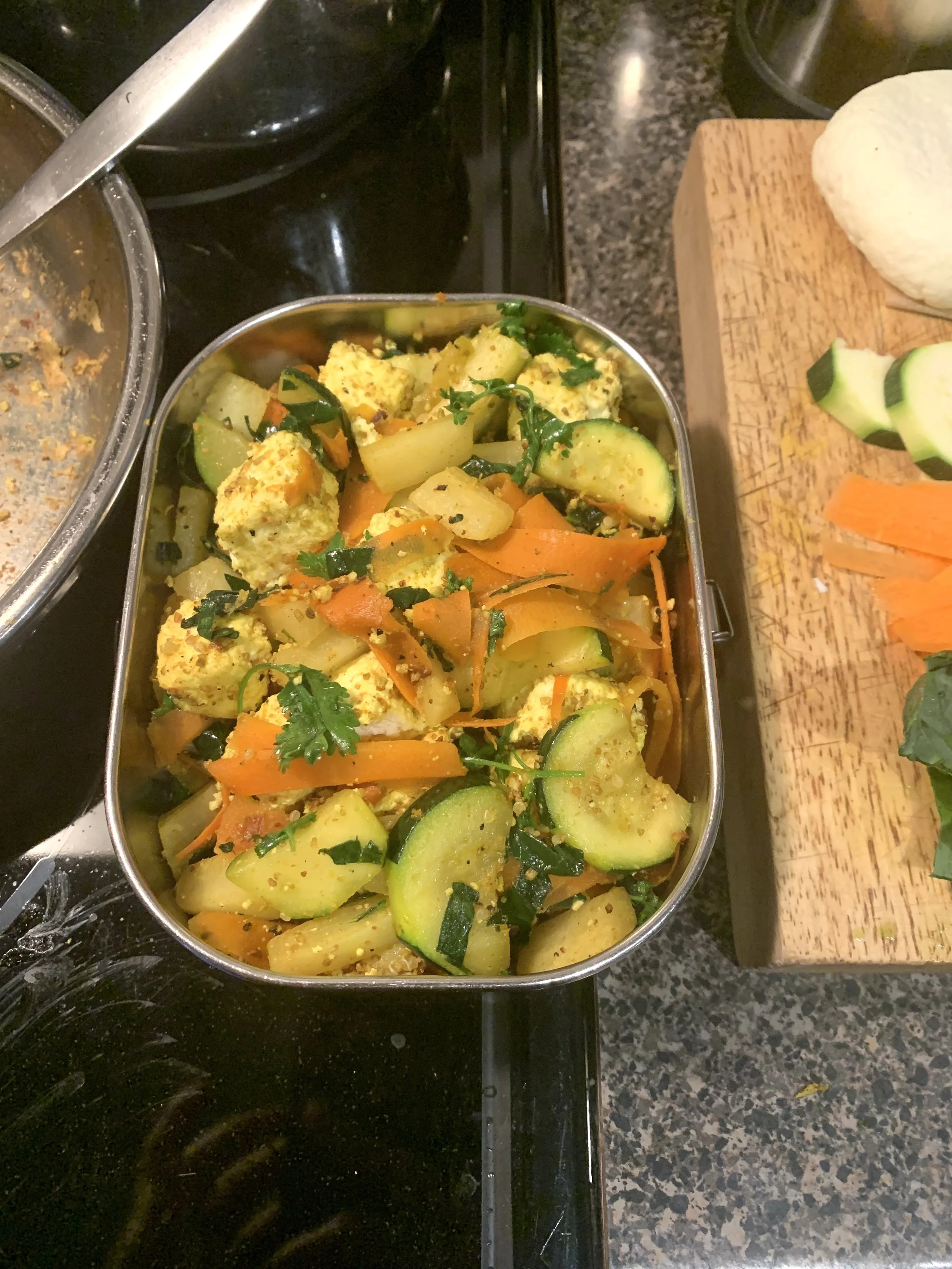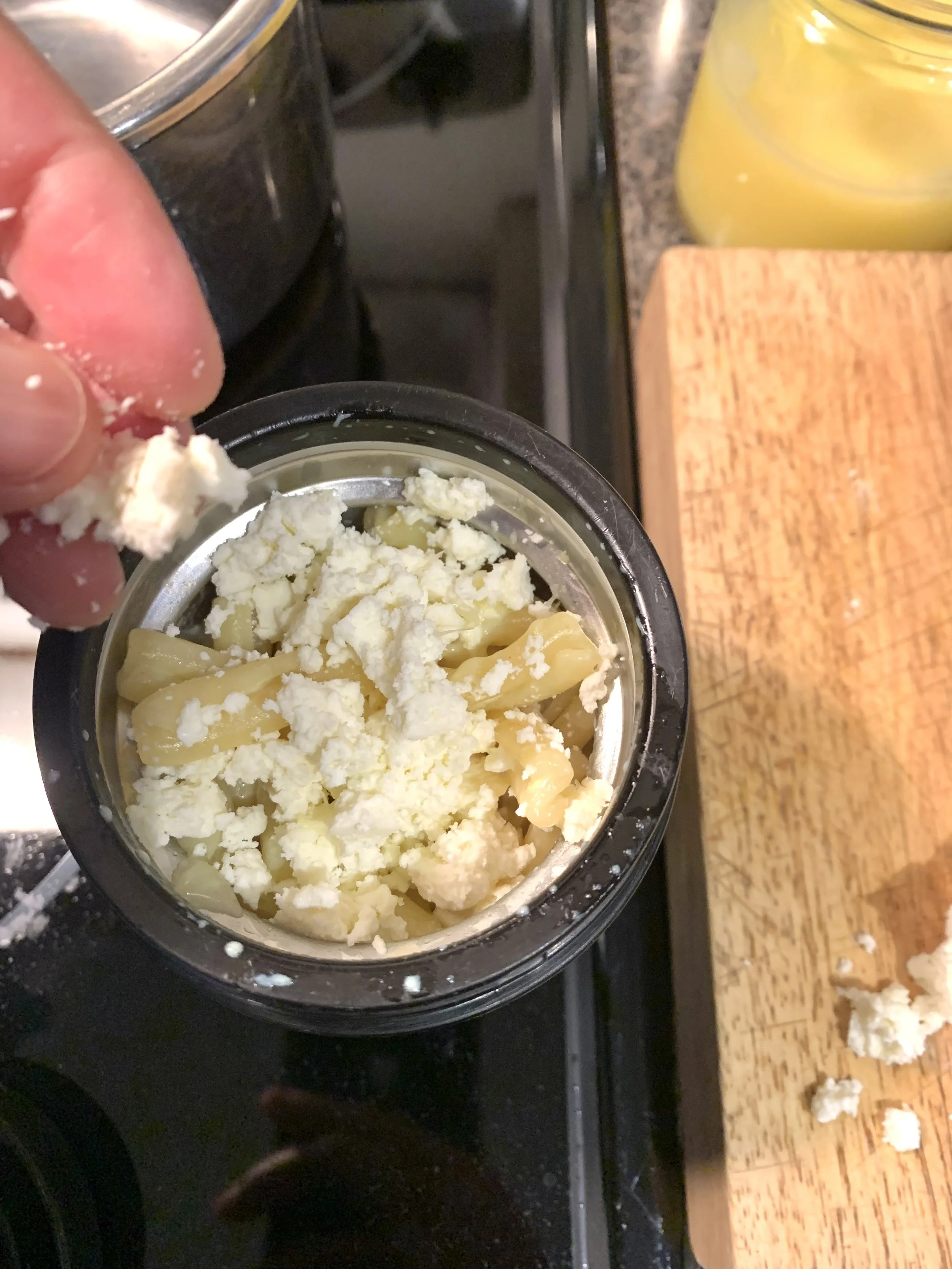Healthy Packed Hot Lunches
WELCOME TO MY BLOG! I’M EVANGELINE & A MOM. ALSO, AN RMT, AND AYURVEDA-YOGA COUNSELLOR. I STARTED MY BLOG DURING COVID TO STAY CONNECTED TO MY CLIENTS AND SHARE MY LOVE OF COOKING HEALTHY, AYURVEDIC MEALS.
AYURVEDIC COOKING TAKES A BALANCED, HEALING APPROACH FOR YOUR DAILY COOKING NEEDS. YOU WILL FIND SIMPLE, EASY TO MAKE NOURISHING MEALS I HAVE MADE FOR MY FAMILY, WITH A DOSE OF AYURVEDA & YOGA WISDOM.
Updated January 29, 2025
Making hot lunches in the morning before everyone heads of to work and school is doable, and these recipes, with some planning, take about 20 minutes to make in the morning. Really, nothing beats a warm, home cooked meal!
Prep Work & Tips
☐ Ensure you have all the ingredients needed to make your hot lunch(es) in the morning.
☐ If you need the oven, always pre-heat the oven first before starting to make your packed hot lunch.
☐ Remove from the freezer any ingredients needed and store in the fridge the night before.
☐ Vegetables are prepped and cut cup and stored in containers in the fridge.
☐ Paneer is made the day before and refrigerated.
☐ Other protein sources are prepped the night before and refrigerated.
☐ Grains and legumes are measured and soaked the night before, and rinsed in the morning.
☐ Home-made spice mixes are prepared beforehand and stored in a jar in a cool place, away from sunlight.
☐ Prepare pesto, chutneys or sauces the day before and store in the fridge.
☐ When making pizza dough in the morning, I recommend a flatbread, like chapati, with no yeast which takes 5 minutes to make. Or prepare the dough the night before. Chapati pizza bakes in 10 minutes at 400F/204C.
☐ Pastry dough is prepared beforehand. Remove from the fridge first thing in the morning to soften before you do your morning routine.
☐ Prep crumble dessert toppings the day before and store in the fridge.
☐ Prep fruit and store in the fridge when making tarts and desserts. You may want to add lime or lemon juice to prevent browning for some fruits.
☐ Because root vegetables, like carrots, take longer to cook than softer ones, peel them into ribbons. With heavier leaves, like kale, cut into small pieces. Then you can cook the vegetables, hard, semi-soft all in, at once.
☐ Soft leafy greens like spinach and Swiss chard are added right at the end when packing up soups, so they will cook during travel.
☐ When making pasta, pour the hot pasta water into the thermos and close, and pour out when you’re ready to transfer the lunch into it.
04. Apple Tart Parcels
What’s a hot packed lunch without a little delightful dessert? These apple and cinnamon filled pastry cups are naturally delicious and can be put in the oven first thing in the morning while you go about putting together lunches.
Yields: 6 tarts
Prep Time: 5 minutes with pastry dough ready
Cooking Time: 25 minutes
Make the pastry dough ahead of time and store in the fridge. Remove from the fridge first thing in the morning to soften before you do your morning routine.
INGREDIENTS FOR PASTRY DOUGH
1 ¼ cups einkorn flour
¼ tsp salt
½ cup chilled butter or ghee, cut in cubes or pieces
¼ cup chilled water + 1 tsp more if you are using ghee
DIRECTIONS FOR MAKING PASTRY DOUGH
Put the flour and salt in a bowl and combine all together.
Add chilled butter or ghee and with a fork or pastry cutter combine until butter or ghee is coated with flour like fine crumbs.
Add chilled water a spoonful at a time, pressing into the dough each time. Do not over mix the dough.
Shape the dough roughly into a ball and transfer onto a lightly floured surface. Cut dough in half and shape into 2 balls.
Wrap each ball tightly with a plastic film and refrigerate for up to 3 days or up to 3 months in the freezer.
INGREDIENTS FOR FILLING
1 large apple or 2 small ones
½ tsp cinnamon
1 tsp arrowroot flour or any flour
1 Tbsp sucanat sugar (optional)
DIRECTIONS FOR PUTTING IT ALL TOGETHER
If the dough is in the freezer take it out the night before you make the tarts and put it in the fridge. Take out the pastry dough from the fridge to thaw for 5 minutes.
Preheat the oven to 375C.
Peel and cut the apple in bite size pieces and stir in cinnamon and flour, and sucanat if the apples used are sour. Set aside.
Take a palm size piece of dough, flatten on a floured surface.
Roll out the dough ⅛ inch thick and 4 ½ - 5 inches in diameter using a medium size ungreased muffin tray, large enough so that it overlaps the each muffin cup about an 1 inch around the edge.
Place pastry over a muffin cup, gently pressing down to the bottom and touching the sides.
Fill the apples ¾ high and pinch opposite ends of the pastry towards the centre.
Repeat Steps 4-7 making each apple parcel.
Bake for 20-25 minutes or until golden brown.
Cool for 5 minutes before removing from muffin pan.
Enjoy!
03. J’s Cheesy Fusilli
Yields: 1 serving
Prep Time: 5 minutes
Cooking Time: 15 minutes
INGREDIENTS
1 tsp ghee or olive oil
⅛ tsp ground fennel
⅛ tsp ground coriander
1 pinch of turmeric powder
⅓ tsp arrowroot powder
½ cup whole milk
⅓ cup grated mozzarella or cheddar cheese- about 25 g
85 grams or 1 cup fusilli
Salt to taste
INSTRUCTIONS
Boil water for pasta.
Grate cheese. Set aside.
In a small pan on medium heat, add ghee or olive oil with fennel, coriander, turmeric and arrowroot powder and whisk vigorously until combined.
Add pasta to boiling water, and cook for 10 minutes.
Add milk to spice & ghee/oil mixture, turning heat up to medium-high, and continue whisking until it’s creamy. Turn heat down to very low.
Strain pasta, add to the sauce, then add grated cheese and combine all together.
Top with some fresh ground pepper. Serve immediately.
Enjoy!
02. Spiced Vegetables & Paneer with Steamed Grains
Yield: 1 serving
Prep time: 1 minute (paneer prepared the night before; grains soaked in water overnight; vegetables peeled, cut and prepared the night before)
Cook time: 15 minutes
Ingredients
1 tsp ghee or olive oil
½ - 1 tsp spice mix (balancing spice mix recipe here)
½ cup carrot ribbons
½ cup zucchini
¼ cup kale
¼ cup daikon radish (optional- excellent in the spring with coriander)
½ cup cubed paneer (75 grams)
¼ tsp salt
Some cilantro leaves and squeeze of lime juice to finish (optional)
Grains
⅛ cup quinoa
⅛ cup basmati rice
1/4 cup water
Instructions
Rinse the grains from soaking the night before. Add water. Cook on high heat until water boils and cook for a few minutes, stirring occasionally, until the water level goes down a bit, then turn off heat and close with a lid, allowing the grains to steam. Ready in 15 minutes.
While grains are steaming, in a small pan on low heat put ghee or olive oil with Spice Mix and until aroma is released.
Add all the vegetables and turn up heat to medium. Add a bit of water and cook for 5 minutes until all veggies are coated with spices and glistening. Cover with a lid, turn heat down to medium-low and cook further for another 5 minutes. You can mix in some cilantro leaves at the end and spritz with lime juice.
Layer grains and vegetables & paneer into a warm thermos or insulated container.
Enjoy!
01. Pasta ‘n Paneer
Hearty and filling- like Mac ‘n Cheese but a little lighter on the tummy with paneer, an unripened soft cheese. My kid loves “mac n’ chz” with melted mozarella, that once in a while I make this version to change it up. I also vary the type of pasta by using a quinoa-rice macaroni as these two carbs are easier on digestion than wheat based pasta.
Click here to make your own home made paneer— takes just 20 minutes.
Yield: 1 serving
Prep time: 5 minutes
Cook time: 15 minutes
Ingredients
¾ cup pasta
2-3 tsps ghee or butter
1-2 pinches turmeric
½ cup crumbled paneer
½ tsp rosemary or thyme (optional)
¼ tsp salt
Instructions
In a medium-size pot bring water to a boil and cook pasta for about 8-12 minutes depending on type used.
Drain pasta, keeping a little bit of pasta water, then add ghee or butter and turmeric and mix all together.
Add crumbled paneer and gently toss. Salt to taste.
Transfer into a warm thermos and finish off with more paneer.




